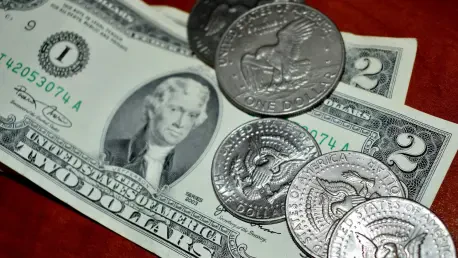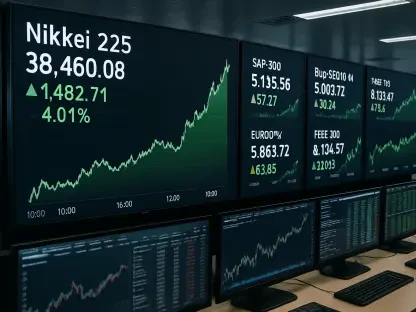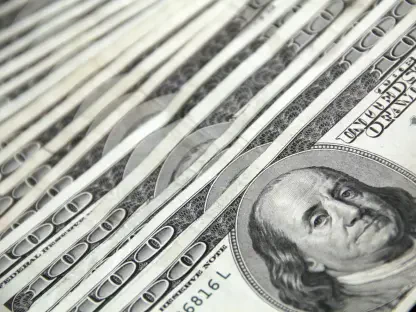In recent times, a significant event unfolded in the United States financial landscape, raising concerns over the independence of central bank leadership. This episode centered around Federal Reserve Chair Jerome Powell, who was embroiled in rumors suggesting his impending dismissal. The scare provoked market jitters and reignited discussions about political influences on monetary policy. These developments underscore the critical role that central bank independence plays in maintaining economic stability in the face of political pressures. The markets experienced a momentary disruption initiated by these rumors, particularly impacting the USD’s position in foreign exchange circles. Although Powell’s dismissal never materialized, the potential upheaval resonated enough to perturb global markets, making it a notable issue in financial circles worldwide.
Market Resilience Amidst Political Uncertainty
Analyzing the global market’s response to the speculated removal of Jerome Powell offers insight into the resilience of financial entities amid political uncertainty. When news circulated regarding Powell’s possible firing, it reportedly emerged from prepared letters by the Trump administration and quickly captured media attention. This sensational potential shift had significant implications for investors, triggering reactions that highlighted the risks tied to the USD if Powell’s removal was realized. Notably, the EUR/USD experienced a substantial surge of 1.3% before Trump’s denial quelled the initial anxiety and reversed the sudden market movements sparked by these headlines. These developments indicate how financial markets are shaped by political fluctuations and their inherent capacity to recover swiftly from such speculation.
The brief period of turmoil showcased how markets have cultivated a degree of sturdiness, even amidst the unpredictability of Trump’s presidency. With Powell’s potential departure causing shifts like a steepened US yield curve and dollar decline, it became apparent how critical maintaining central bank independence is against political interference. This transient scare, while momentary, accentuated the stakes for future headlines regarding Powell’s position. It inspired markets to strengthen defenses against unpredictable political maneuvers. Following this episode, market focus realigned with broader macroeconomic factors, tempering concern with a move back to conventional monetary expectations and data-driven guidance.
Implications of Central Bank Leadership Stability
The tumult surrounding Powell’s potential dismissal amplified the significance of stable leadership within central banks. Periodic headlines casting doubt on Powell’s tenure have elevated the stakes concerning the USD’s risk profile, leading markets to build protections against similar future occurrences. Resiliently, financial entities recalibrated upon calming revelations post-scare, throwing focus back to macroeconomic assessments. Notably, the possibility of a Fed rate cut at the September meeting stayed minimal, despite lower-than-expected Producer Price Index (PPI) figures, as prior Consumer Price Index (CPI) data tempered expectations for a major policy shift.
In light of current conditions, analysts anticipated potential consolidation in the USD value or slightly favorable reevaluation, steering attention toward other economic data points such as retail sales and Treasury International Capital (TIC) assessments. Scrutiny around these indicators sought visible moves away from US Treasuries, which, if confirmed, could solidify long-term bearish views on the USD. Across the Atlantic, parallel dynamics unfolded. Despite the brief spike occasioned by Powell’s scare, the EUR/USD steadied, trading within a low 1.16 range. Potential dovish appointments by the Fed added further intrigue, though EU developments, like proposed budget increases, principally influenced long-term Euro predictions.
Global Reactions and Economic Dynamics
Shifting focus to the United Kingdom reveals notable recalibrations in the job market amidst unfolding economic data. Revisions in job loss figures for May showed a substantial reduction, shifting from 109,000 to 25,000 losses. This correction lessened immediate monetary easing pressures on the Bank of England, enabling stabilization amid rising wage growth. The data reflected a 3.6% increase in private-sector pay on an annualized basis over three months. Despite modest reactions in the EUR/GBP exchange rate, the Bank of England’s broader resistance against dovish shifts bodes for stronger currency resistance levels nearing 0.870.
Hungary’s economic sector displayed a muted response to data cues, grappling with fluctuating wage growth and economic sentiment swings. However, high carry characteristics have propelled the Hungarian Forint, buoyed by predictive stability amidst pricing shifts away from drastic rate cuts. Anticipated shifts in inflation rates could tweak market outlooks favorably towards more dovish narratives, potentially softening HUF strengths for expansion against the Euro. These developments speak to diverse market dynamics framed by central bank maneuvers and localized economic indicators, providing a comprehensive survey of international financial trends.
Reflections and Future Trajectories
Examining the global market’s reaction to the rumored dismissal of Jerome Powell reveals how financial systems manage political uncertainty. The buzz started when it was reported that the Trump administration had prepared letters suggesting Powell’s potential firing, quickly grabbing media and public attention. This speculative shift had major repercussions for investors by bringing the risks impacting the U.S. dollar to the forefront should such a removal occur. Notably, the EUR/USD pair surged by 1.3% before Trump denied these claims, calming the initial panic and reversing the abrupt changes driven by the news. These incidents demonstrate how political rumors affect financial markets and their ability to recover.
The brief market upheaval demonstrated a kind of resilience developed over time, especially during the unpredictable Trump era. Powell’s possible exit had market implications, such as a steepened US yield curve and a dip in the dollar, underscoring the necessity of shielding central bank independence from political sway. This temporary alarm emphasized the risks tied to future discussions about Powell’s role, motivating markets to bolster themselves against unpredictable political events. The focus post-incident shifted back to macroeconomic issues and conventional monetary policies.









